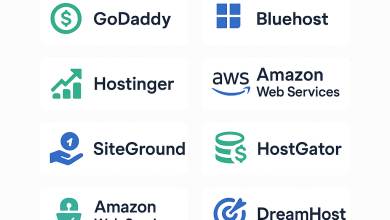How to Scale Your Hosting as Your Website Grows
When you first launch a website, shared hosting may be enough. But as your traffic increases, your hosting plan needs to grow with you—or your site could suffer from slow speeds, downtime, and poor user experience. In this guide, we’ll walk you through when and how to scale your hosting solution to match your growing online presence.
Why Scaling Matters: The Business Case
Web hosting isn’t just about space—it’s about speed, reliability, and user trust. If your site loads slowly during high-traffic periods or frequently goes down, visitors will bounce, and conversions will drop.
Growth Challenges You Might Face:
- Sudden traffic spikes from promotions or viral content
- Launching new features or a larger product catalog
- Scaling from a blog to an e-commerce site
- Increasing storage, bandwidth, or database demands
- Adding multimedia content (video, high-res images)
Signs It’s Time to Upgrade Your Hosting
If you’re not sure whether it’s time to scale, here are red flags to watch out for:
- Frequent downtime or error pages
- Slow page load times despite optimization
- Resource limit warnings from your host
- Security vulnerabilities or lack of backups
- Poor performance during marketing campaigns
Hosting Types That Scale with You
1. Shared Hosting → VPS Hosting
Good for sites outgrowing shared resources. You get more control, better performance, and isolated environments.
2. VPS Hosting → Cloud Hosting
Cloud offers scalability on-demand, allowing you to add RAM, CPUs, or storage instantly based on traffic.
3. Dedicated Hosting
Ideal for large, established businesses. Offers maximum control, power, and security—but at a higher cost.
4. Managed WordPress Hosting
Perfect if you run a WordPress site and want automatic scaling, caching, backups, and updates with minimal hassle.
Scaling Strategies for Long-Term Success
1. Choose a Scalable Host from the Start
Providers like Hawk Host offer easy upgrades between plans, including shared, VPS, and cloud hosting—perfect for growing sites.
2. Use a CDN (Content Delivery Network)
Distribute content globally and reduce server load. It speeds up your site and handles more users efficiently.
3. Implement Caching and Optimization
Keep your site lean with browser caching, GZIP compression, and optimized media files.
4. Track Usage and Monitor Traffic
Use tools like Google Analytics and your host’s dashboard to stay ahead of traffic trends and usage spikes.
5. Plan for Seasonal Surges
Expect traffic bumps during holidays or sales events? Scale up your resources in advance and scale down later.
Security and Backups: Don’t Scale Without Them
As your site grows, so do risks. Make sure your hosting plan includes:
- Daily backups
- SSL certificate
- Malware scanning
- DDoS protection
- Two-factor authentication for admin access
Real-World Example: A Growth Story
Imagine a blogger who starts small with shared hosting. Over two years, the blog turns into a course platform and then a full-fledged e-commerce site. With Hawk Host, they seamlessly upgrade to a VPS, then cloud, with zero downtime and continued user growth.
Final Thoughts
Scalable hosting is not a luxury—it’s a necessity for any serious website. By choosing the right plan and provider early on, you set the stage for success and avoid the pitfalls of outgrowing your hosting. Invest wisely, scale strategically, and keep your users happy—no matter how big your site gets.
Ready to grow? Explore scalable plans with Hawk Host and future-proof your website today.





